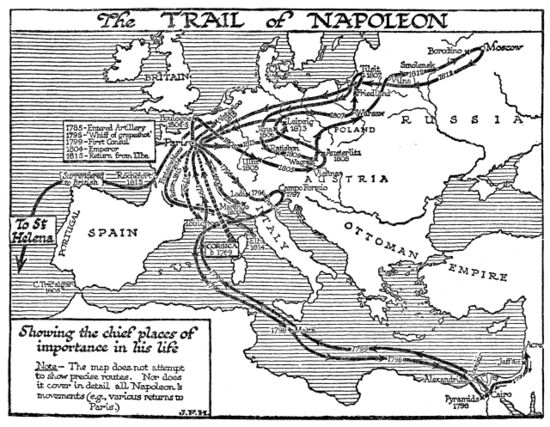imported>Chunbum Park |
imported>John Stephenson |
| (194 intermediate revisions by 8 users not shown) |
| Line 1: |
Line 1: |
| A '''[[destroyer]]''' is a type of warship, the nature of which has evolved since it first came into use, roughly at the beginning of the twentieth century. Several other warship designations have, at different times and in different navies, overlapped the "destroyer" role. Most common among these roles are cruiser and ocean escort. Another type of vessel, whose nomenclature is the root of "destroyer", has been called "torpedo boat" and exists in new forms generically called fast attack craft.
| | {{:{{FeaturedArticleTitle}}}} |
| ====Initial usage==== | | <small> |
| When the modern self-propelled torpedo was invented, in 1866, by Robert Whitehead, it was initially added to conventional warships, but navies soon realized that a small, fast craft, with a main battery of torpedoes, could threaten much larger warships such as battleships. The battleship of the early 20th century was the largest, most heavily armed, and most heavily protected warship type, but relatively slow and not extremely maneuverable. Torpedo boats were generally not capable of long-range steaming or being seaworthy in the "blue water" deep ocean; they were coastal craft.
| | ==Footnotes== |
| | | {{reflist|2}} |
| When battleships and other large ships, possibly escorting unarmed cargo and troop transports, needed to approach a hostile shore, they needed to deal with the torpedo boat threat. A partial solution was adding a secondary gun battery of smaller caliber, faster firing rate, and faster aiming than the main guns intended to sink other battleships, but the secondary battery still let the torpedo boats come too close.
| | </small> |
| [[Image:Spanish TBD Audaz, 1898.jpg|thumb|300px|left|Hybrid sail-steam Spanish torpedo boat destroyer ''Audaz]]
| |
| A new type of vessel, called the "torpedo boat destroyer", was developed as an escort to major warships, and possibly merchant vessels threatened by torpedo boats. In the words of a requirement restated a century later, "Self-deployability (blue water endurance) is needed to allow the platforms to get to the contested area without the need for valuable and scarce open ocean transport or the support of an ever-present mothership." Such vessels still had to be small, fast, and maneuverable enough to pursue and destroy torpedo boats.</onlyinclude> Early approaches to increasing range and self-deployability included the use of sails in addition to steam, on the Spanish torpedo boat destroyer ''Audaz'', in service between 1897 and 1927.
| |
| | |
| It soon became obvious that the torpedo boat destroyer was a useful vessel for a wide range of applications, such as convoy escort, so the specialized designation became the simple "destroyer". Ironically, while the first destroyers were armed only with quick-firing guns, usually of several calibers from medium to light, navies started equipping destroyers with torpedoes, as the weapon of choice if they did need to confront battleships. For simplicity, the category of "cruiser" is not being included in this immediate discussion; simply assume they were vessels of intermediate characteristics between battleships and destroyers.
| |
| | |
| The new destroyers would usually make torpedo attacks in groups. Such groups would often be built around a light cruiser or a ship called a destroyer leader; both types were more survivable and more heavily armed than destroyers, which better fitted them to lead the attack unit. Early destroyers were intended to be small and inexpensive, with numbers of hulls being more important than individual ship capability.
| |
| | |
| ''[[Destroyer|.... (read more)]]''
| |
Latest revision as of 10:19, 11 September 2020
Napoleon (Napoleon Bonaparte or, after 1804, Napoleon I, Emperor of the French) was a world historic figure and dictator of France from 1799 to 1814. He was the greatest general of his age--perhaps any age, with a sure command of battlefield tactics and campaign strategies, As a civil leader he played a major role in the French Revolution, then ended it when he became dictator in 1799 and Emperor of France in 1804 He modernized the French military, fiscal, political legal and religious systems. He fought an unending series of wars against Britain with a complex, ever-changing coalition of European nations on both sides. Refusing to compromise after his immense defeat in Russia in 1812, he was overwhelmed by a coalition of enemies and abdicated in 1814. In 1815 he returned from exile, took control of France, built a new army, and in 100 days almost succeeded--but was defeated at Waterloo and exiled to a remote island. His image and memory are central to French national identity, but he is despised by the British and Russians and is a controversial figure in Germany and elsewhere in Europe.
Rise to Power
Once the Revolution had begun, so many of the aristocratic officers turned against the Revolutionary government, or were exiled or executed, that a vacuum of senior leadership resulted. Promotions came very quickly now, and loyalty to the Revolution was as important as technical skill; Napoleon had both. His demerits were overlooked as he was twice reinstated, promoted, and allowed to collect his back pay. Paris knew him as an intellectual soldier deeply involved in politics. His first test of military genius came at Toulon in 1793, where the British had seized this key port. Napoleon, an acting Lieutenant-Colonel, used his artillery to force the British to abandon the city. He was immediately promoted by the Jacobin radicals under Robespierre to brigadier-general, joining the ranks of several brilliant young generals. He played a major role in defending Paris itself from counter-revolutionaries, and became the operational planner for the Army of Italy and planned two successful attacks in April 1794. He married Josephine (Rose de Beauharnais) in 1796, after falling violently in love with the older aristocratic widow.[1]
- ↑ Englund pp 63-73, 91-2, 97-8
